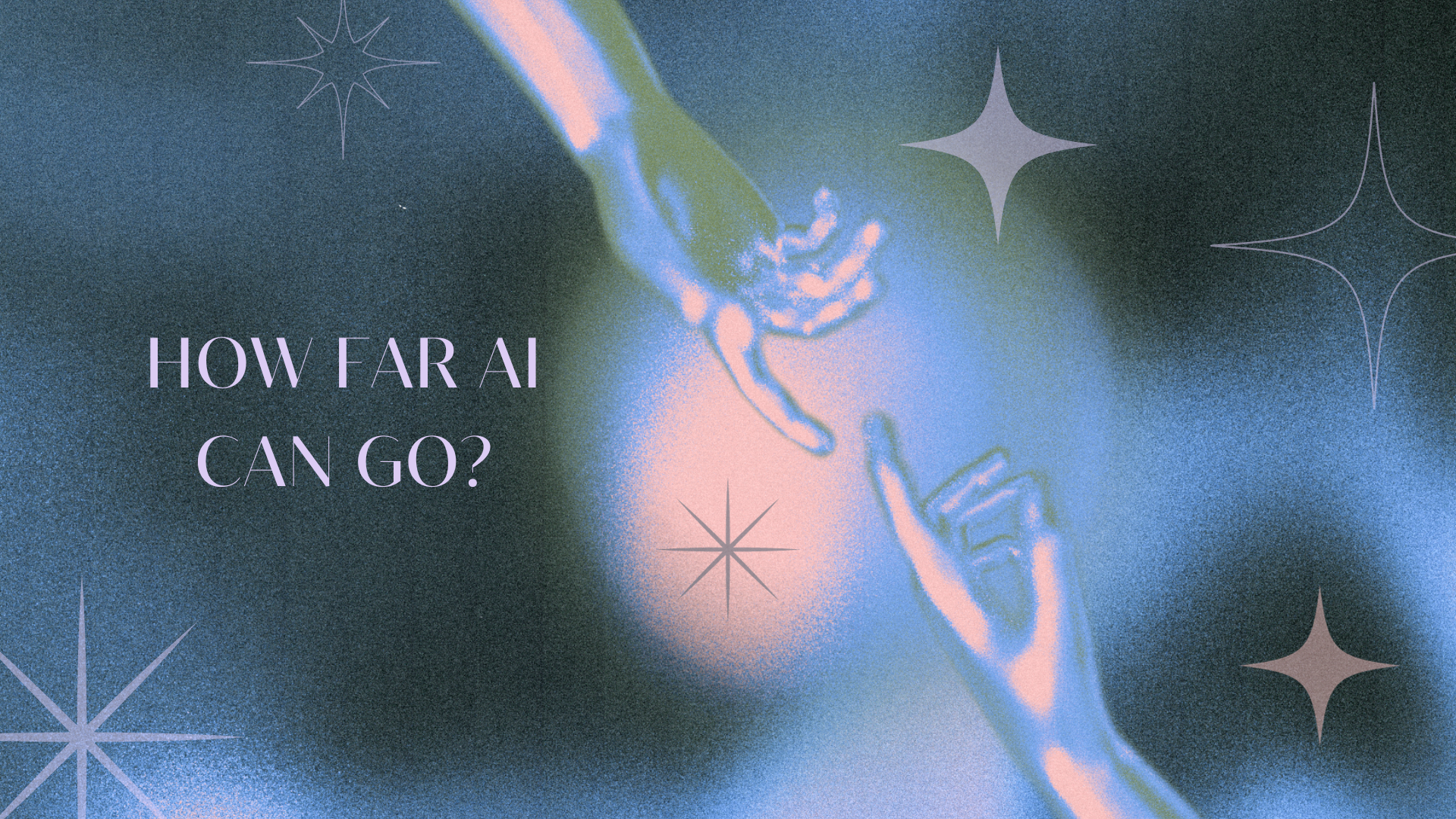How far AI can go?

We are living in a world where AI is gradually growing and gaining more power due to its increasing influence on our daily lives. Most noticeable examples in our day and age would be GPS which guides us to move from place to place, text editors and autocorrect, or digital assistants like Siri and Alexa.
We probably have all heard about different controversies regarding the growing dominance of Artificial Intelligence, such as whether AI is a threat to human resources and in general being labeled as a threat to humanity. However, we cannot ignore the fact that AI, by different means, is helping and doing the best for our society.
AI vs Humans
The Sky Walker Hand and Shimon are two great examples showing one of the best AI can bring to us: collaboration with humans. Shimon is a robotic musician founded by Gil Weinberg, the founding director of Georgia Tech Center for Music Technology. Shimon, as an improvising robot, can listen to music played by humans and improvise them using its ability to find patterns (in this case is patterns in music with notes and symbols), which defines machine learning.
What is great about Shimon is that it can collaborate and work with humans in producing and performing music, thus playing the role of an ideal partner for musicians to produce even greater music. This connects to my second thought of what is the best of AI, which is to enhance humans. In Shimon’s case, artificial intelligence has shown how it could be a potential and ideal collaborator with humans to improve outcomes. In the Sky Walker Hand’s case, AI is enhancing humans ourselves. Talking about the Sky Walker Hand, Gil Weinberg expressed how AI can augment humans, specifically with the following case of Jason Barnes.
Jason Barnes is a talented musician and drummer who lost his right arm when he was a child. Losing his right arm at such a young age was devastating for Jason, as it prevented him from playing drums the way he used to. Jason and Gil then collaborate to test out Gil’s innovation: the Sky Walker Hand.
The Sky Walker Hand is a prosthetic arm, an artificial limb that replaces an arm/ hand lost. Usually, a normal prosthetic arm on the market works by picking electrical signals from the muscles to predict the human’s intention and action. This technology is commonly known as EMG, electromyography. On the one hand, the Sky Walker Hand uses ultrasound technology. It allows us to observe everything inside the arm using high-frequency sound waves to capture live images of our body parts.
If Jason wants to move his thumb, he would first flex his muscles to move the missing thumb, and the tech would then capture live images of his action to visualize his intention of moving his thumb. What was witnessed was how the artificial hands helped Jason to play drums even better than he ever had: it played faster than any humans and created textures humans can ever make. This scenario proves how humans produce AI to enhance humans.
AI vs Wildlife
On the one hand, the relationship between AI and wildlife also tells a lot about how far AI can go.

With the help of AI, the Mara Elephant project was successful in detecting poachers and thus protecting elephants in areas where elephants are at risk. The members of the project used an AI-powered anti-approaching device called Trail Guard, a motion-capture camera that captures images whenever a person passes by. The process involves analyzing body shapes, facial geometry, movements, and so on to identify human figures. This technology helped the team capture images of poachers, which could help prevent them from killing the animals before they had the chance to do so.
AI also inspired another approach to saving animals by reducing meat consumption. Using an AI algorithm named “Giuseppe” which analyzes food’s molecular structure and recombines the corresponding components from plant-based food, scientists were able to mimic the taste of meat and eventually reproduced animal-based food from plants that taste the same as the original.
AI vs Nature
Furthermore, we might have the ability to indicate weather patterns and predict natural disasters thanks to AI forecasting methods. By using AI sensors, scientists were able to forecast potential earthquakes by detecting the vibration pattern of the ground, thus predicting the time when the more extreme vibrations are going to take place. They were also able to use satellite sensors in agriculture and the military, giving prior warnings of food shortages to problem areas in order to prevent fights, conflicts, and famine.
In general,
the imperfections and ethical considerations of AI should not be ignored, and so does its potential. What fascinated me as I was writing this research is how the potential of AI is indeed boundless. AI has proved itself how it can collaborate with us to enhance output, how it can enhance our own capabilities, how it can predict natural disasters, or how it can safeguard wildlife. For a lot of reasons, there is a lot more to expect from AI, whose impacts are multifaceted and far-reaching.
References
"How Far is Too Far? The Age of A.I." Youtube Originals, 18 Dec. 2019,
www.youtube.com/watch?v=UwsrzCVZAb8&t=613s.
"Saving the world one algorithm at a time | The Age of A.I." Youtube Originals, 15 Jan. 2020, https://www.youtube.com/watch?v=0wy4u34fii4